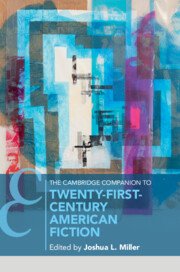Book contents
- The Cambridge Companion to Twenty-First-Century American Fiction
- The Cambridge Companion to Twenty-First-Century American Fiction
- Copyright page
- Contents
- Illustrations
- Contributors
- Acknowledgments
- Chronology
- Introduction
- Part I Forms
- 1 Short Fiction, Flash Fiction, Microfiction
- 2 Experimental Fiction
- 3 Speculative Fiction
- 4 Graphic Fiction
- 5 Digital Fiction
- Part II Approaches
- Part III Themes
- Further Reading
- Index
4 - Graphic Fiction
from Part I - Forms
Published online by Cambridge University Press: 02 September 2021
- The Cambridge Companion to Twenty-First-Century American Fiction
- The Cambridge Companion to Twenty-First-Century American Fiction
- Copyright page
- Contents
- Illustrations
- Contributors
- Acknowledgments
- Chronology
- Introduction
- Part I Forms
- 1 Short Fiction, Flash Fiction, Microfiction
- 2 Experimental Fiction
- 3 Speculative Fiction
- 4 Graphic Fiction
- 5 Digital Fiction
- Part II Approaches
- Part III Themes
- Further Reading
- Index
Summary
Histories of dissolving high/low culture divides inform Katalin Orbán’s discussion of contemporary graphic fiction, as she posits the critical and popular emergence of long-form, verbal-visual works that push narrative conventions in new directions, such as spatial-temporal experiments (e.g., by Chris Ware and Richard McGuire), the use of visual metaphors and other conventionally linguistic literary devices, and genre blurring distinctive to the drawn medium.
Keywords
- Type
- Chapter
- Information
- Publisher: Cambridge University PressPrint publication year: 2021

